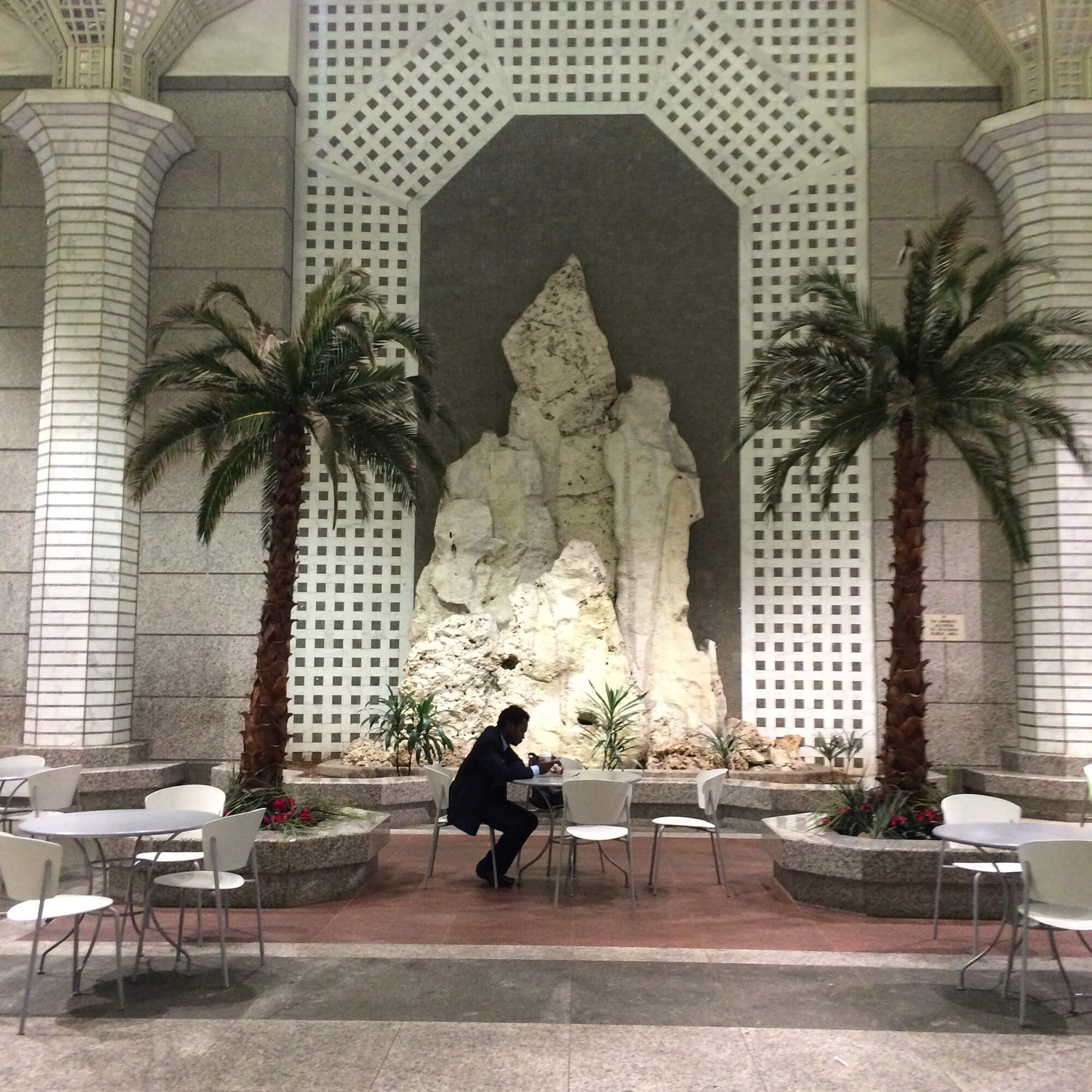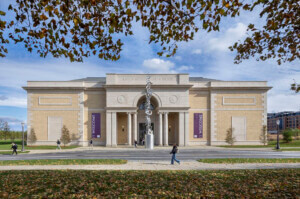On August 21, the New York City Planning Commission voted to allow 60 Wall Street’s owners to renovate the beloved 1989 postmodern lobby by Kevin Roche and John Dinkeloo—a decision that’s since been met with chagrin by the architecture and preservation community.
At the hearing, the planning commission’s chair Dan Garodnick acknowledged the lobby’s architectural merits but said the ruling ultimately came down to a cut-and-dry private property issue. “Like many members of the public, I have a certain amount of fondness for the existing design of 60 Wall Street,” Garodnick stated. “That said, it’s not a landmarked interior, and the owners have a right to update, refresh and reposition this vacant commercial office building.”
The ground level atria known for its generous floor-to-ceiling height and marble clad columns referencing ancient Egypt and antiquity will likely be replaced by a more static, minimalist lobby in vogue with development trends today. 60 Wall Street’s majority owner is GIC Singapore (Singaporean sovereign wealth fund) who became the building’s majority shareholder in 2017. Its minority owner is The Paramount Group who will be the project developer.
“It’s very frustrating because they don’t have a tenant yet for the building after J.P. Morgan and Deutsche Bank left,” posited Docomomo U.S. executive director Liz Waytkus. “Maybe the future tenant would want to keep it? Couldn’t the lobby at 60 Wall Street become a great marketing opportunity for potential tenants? Then there’s the sustainability issues of ripping out an expensive interior and replacing it. The city keeps saying we need to find ways to be a more sustainable city and this is not it!” Waytkus told AN.
While the ruling is an unfortunate one for many preservationists, Waytkus said that the interior space still has a chance. “The fight really isn’t over. We’re working with the city councilman Christopher Marte to appeal the planning commission’s decision.”
Waytkus has been following the lobby’s fate for years, but wasn’t notified of the August 21 hearing. “We’ve been monitoring this,” she said. “The planning commission is supposed to notify the public in advance of the hearing, but the community board said this didn’t happen,” she continued.

On several occasions, preservationists seeking to salvage the lobby have encountered the argument that there simply isn’t enough scholarship surrounding postmodern architecture. Architecture critic Alexandra Lange, who has studied postmodernism, notes that there is in fact an abundance of knowledge production surrounding this topic. “It’s really important to preserve buildings even if they’re seemingly on the margins of taste and history,” Lange told AN. “The lobby at 60 Wall Street is such an incredible example of Roche and Dinkeloo’s move from modernism to postmodernism.”
“There’s a way that we’ve been taught architectural history and what ‘serious architecture’ looks like,” Lange continued. “Postmodernism has always had to contend with this. We need to confront our architectural prejudices, and to interrogate this idea that only ‘serious architecture’ made of marble should get landmarked.”
New York architect Robert A.M. Stern is “very upset” by the planning commission’s ruling. “Postmodernism is a very important movement of the late 20th century and without question this lobby is one of its great examples,” Stern told AN. “I’m hardly a student of the law but it seems to me the planning commission is operating outside its expertise. It’s not a body equipped to make aesthetic decisions. It should stick to traffic issues,” he said.
Stern, an active practitioner and student of postmodernism since the 1970s, notes that the planning process which got the lobby at 60 Wall Street built was a “complex negotiation of air rights,” he said. “In that sense the negotiation said the space belongs to the public!” he stated.
The ruling comes after years of efforts by preservationist groups to save the lobby. In 2022, Preservation Futures, a Chicago-based firm founded by Jonathan Solomon and Elizabeth Blasius, supported the lobby’s nomination at 60 Wall Street for historic landmark status. In their letter, Preservation Futures pointed not only to the lobby’s architectural components but also the important role it played during Occupy Wall Street.
“The lobby was used as a meeting space by the Occupy Movement,” said Jonathan Solomon. “It was an interior version of Zuccotti Park that offered a meeting space protected from the elements that also had things like charging ports and tables and chairs; the physical infrastructure necessary for that movement to thrive,” he said. “How the lobby was used during Occupy revealed that the space is indeed flexible and responsive to changing socio-cultural needs, meaning it doesn’t have to be redesigned in order to work today.”
Akin to the Thompson Center in Chicago and Portland Building by Michael Graves, Solomon notes that the lobby at 60 Wall Street is one that will stand the test of time if given the chance. “The challenges with it aesthetically are comparable to the challenges of preserving postmodernism in general,” Solomon said. “This includes a long running misunderstanding that postmodernism’s materiality is lower in quality than the materiality of modernism and neoclassicism or any other movement. There’s also a confusion between taste and value. People will say ‘Well, I don’t like it.’ But that has no bearing on whether or not a building is worth saving.”











